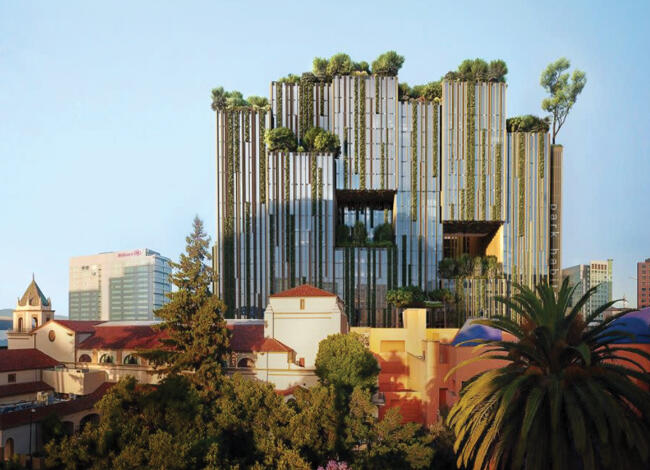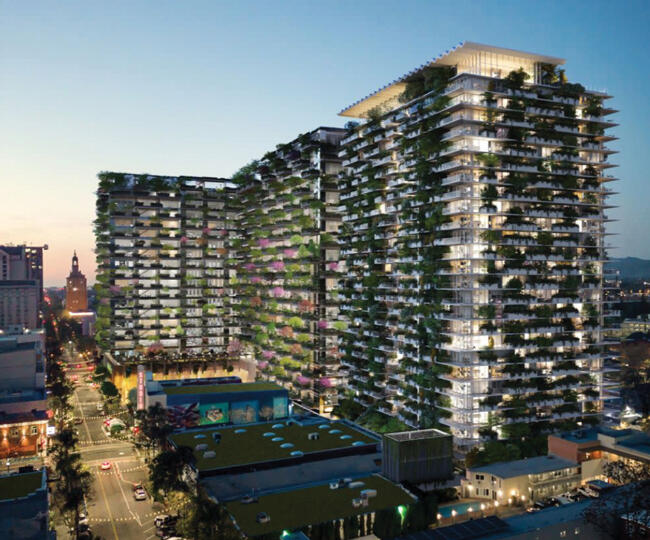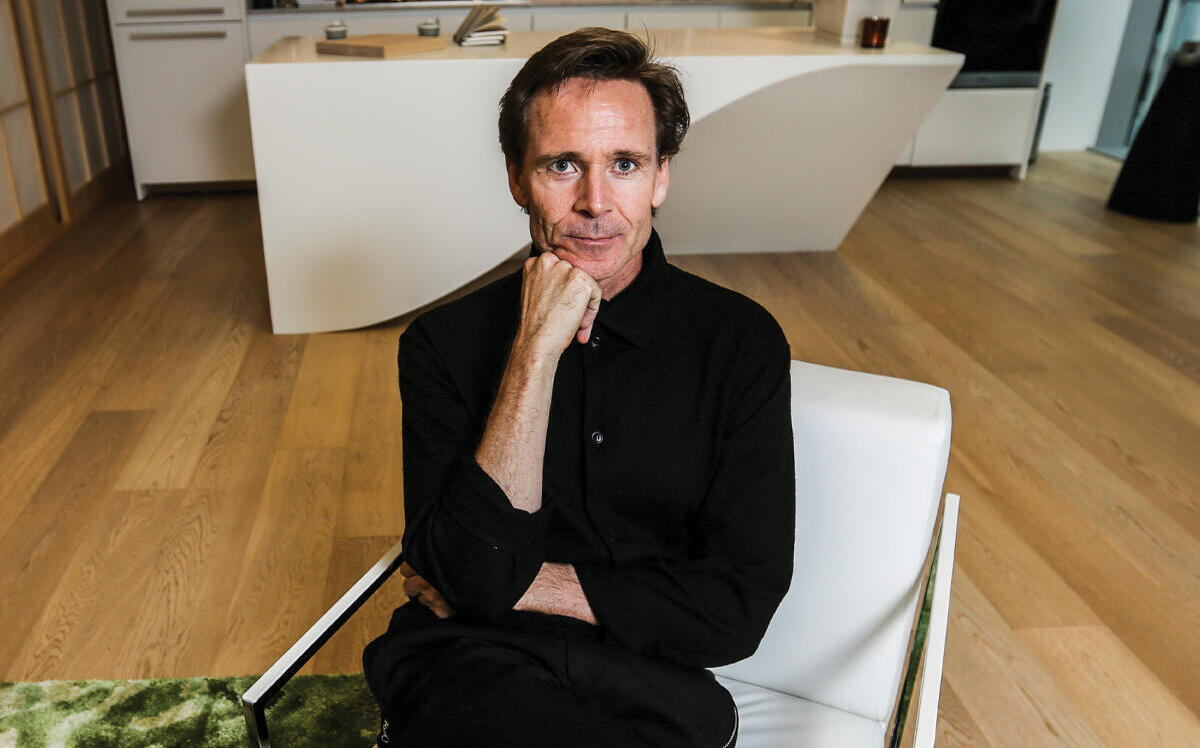Few real estate moguls are strangers to controversy, but most bristle at labels like “vilified” or “hated.” Some get defensive, while others claim their detractors are just a few loud voices.
Not Ian Gillespie.
“I have no time for that shit,” Gillespie wrote in his self-published, 532-page career retrospective in 2012, responding to the notion that rival developers in Vancouver resented the apparently preferential treatment he received from local officials.
“I look at the quality of work that they’re doing, and I say, ‘If you want to raise your game and do the quality of work that we’re doing, then you’ll get the time and attention of the people at the City of Vancouver that you deserve.’”
This unapologetic attitude has played a role in the 61-year-old’s journey to becoming one of Canada’s most successful builders. Since launching Westbank in 1992, he has averaged one completed project a year. His backers have included some of Canada’s largest REITs; the manager of one of the country’s largest pension funds; and one of Asia’s richest families.
After 30 years reshaping Vancouver’s skyline, Gillespie is turning his focus about 1,000 miles south to downtown San Jose. Westbank, alongside local developer Urban Community, Hong Kong’s Peterson Group and pension fund OPTrust, wants to build 5,000 homes and enough office space for 40,000 workers.
The firm spent north of $200 million to acquire its first six downtown development sites. It seeks to raise $1.5 billion for the three furthest-along projects, two that are under construction and another slated to break ground this fall.
The outcome of that fundraising effort is uncertain, as high interest rates, a weak office market and Bay Area families flocking to the suburbs have made downtowns less attractive than they were before the pandemic. The grim outlook for the region’s office buildings has drawn comparisons to the Great Recession and the dot-com bubble.
In San Jose’s core, where around 20 percent of office space sits vacant, Gillespie wants to add 3.5 million square feet. Some brokers are skeptical that such plans will pencil out. And as San Joseans learn more about Gillespie and Westbank, they’ll also learn why he’s one of Canada’s most polarizing developers — revered by those who applaud his envelope-pushing projects and reviled by others who accuse him of contributing to Vancouver’s affordability crisis.
For San Jose, a city looking to shed its bedroom-community label and leave no doubts of its primacy in Silicon Valley, a controversial developer with zero experience building local projects could be a recipe for conflict — or exactly what it needs.
“Frankly, Westbank and Gillespie, we should all thank them,” said Pierluigi Oliverio, head of the city’s Planning Commission. “The fact that anyone would build in San Jose with the onerous regulations and extremely slow response from the city —we should just be thankful that they would actually build here.”
Jags to riches
Gillespie lore suggests he knew as a teenager that he’d end up in real estate. As the story goes, his late cousin Rod Schroeder pulled up to Gillespie’s childhood home in Port Coquitlam, British Columbia, in a red Jaguar XK-E.
Gillespie asked Schroeder what he did for a living, and his cousin told him he was the chief financial officer of Vancouver-based Daon Development. Gillespie’s career ambitions became clear.
In high school and college, he was a promising middle-distance runner and nearly secured a spot on Canada’s 1984 Olympic roster, finishing third in an 800-meter qualifier. Things could have turned out differently if anterior compartment syndrome hadn’t cut his running days short.
He earned an MBA at the University of Toronto and later teamed up with Schroeder, who had left Daon in 1983 to strike out on his own. The firm mostly developed strip malls, and within a few years Gillespie grew disillusioned with the work.

Park Habitat in San Jose
After launching Westbank, Gillespie’s first solo project was London Plaza in Richmond, British Columbia, a roughly 200,000-square-foot mixed-use development with offices, retail and 76 condo units.
“He had no clue about architecture,” James Cheng, a Vancouver-based architect who’s worked with Gillespie for decades, told Vancouver Magazine in a 2014 interview. “But he started to understand he can’t hire just any architect. He started to realize architecture can become a sales tool.”
Gillespie’s first collaboration with Cheng, a pair of downtown Vancouver condo towers dubbed the Palisades, reflected his desire to challenge himself as a developer. Westbank completed the high-end oval towers in 1996 on behalf of the Kuok Group of Hong Kong, led by secretive Malaysian billionaire Robert Kuok. Also in the mix was Hok Meng Heah, who ran Kuok’s Canadian property arm.
The trio went on to develop additional projects, including the Residences on Georgia, a pair of 36-story residential towers in Vancouver, and Ironwood Plaza, a strip mall in Richmond. Kuok Group eventually shifted its business focus, so Gillespie bought out its Canadian unit and rolled it into Westbank.
Ghosts of downturns past
In the late 1990s, Gillespie decided the time was right to enter the U.S. market. He and Lincoln National Life Insurance paid $18 million for half a block next to a mall in downtown Bellevue, Washington, in 1998. The original plan: Build a $300 million project called Lincoln Square, consisting of three new high-rises — a 33-story office tower, a 28-story hotel and a 21-story apartment building.
At a time when downtown Bellevue and nearby Seattle were seeing a rush of competing project proposals, Westbank and Lincoln’s was the boldest of them all — at the time, it would be the largest mixed-use development west of the Mississippi River. When a local brokerage predicted Lincoln Square would be the last of five competing Bellevue projects to get built, Gillespie was defiant.
“Just watch me,” he said, according to news reports from the time.
He secured Drugstore.com as an anchor office tenant. He nabbed Westin for its hotel flag, with parent company Starwood Hotels & Resorts taking a 25 percent stake in the project. He sold a majority share in the project to Lendlease, a multinational development heavyweight, in 2000, the year construction began.
But timing is everything. The dot-com bubble burst, Drugstore.com’s shares tanked, and it terminated its lease agreement two years later, leaving the project’s 530,000-square-foot office portion vacant. Starwood also pulled out.
Yet even after losing an anchor tenant and hotel partner, the project was still afloat: Westbank and Lendlease said in May 2001 that they’d secured a $255 million construction loan.
Then 9/11 happened. The project ground to a halt, as did the local commercial real estate market. Average rents for new and existing office buildings in the Washington metros plunged as vacancies hit 15 percent, according to the Canadian newspaper the Globe and Mail.
Westbank was still advancing projects, specifically Shaw Tower, a 42-story office-condo building in Vancouver. But Lincoln Square was no longer viable, so Gillespie sold his firm’s minority stake to Lendlease in 2002. It’s arguably Westbank’s most well-known misstep.
Gillespie told the Globe and Mail eight years later that the project was bigger than what Westbank was ready to handle.
The firm rebounded by completing Shaw Tower in 2005. Developed as a joint venture with Ledcor Property Investments, the building was briefly Vancouver’s second-tallest before it was surpassed a few years later by another Westbank project, the 62-story Shangri-La hotel and condo tower.
One of Westbank’s most ambitious San Jose developments would similarly combine office and residential space. Dubbed Energy Hub, the Bjarke Ingels-designed project calls for ground-floor retail, nearly 200 apartments and more than 400,000 square feet of offices. Packed with energy-efficient design elements, including a curved, tree-covered facade, solar panels and a rainwater reuse system, the project is intended “to be a symbol of San Jose’s sustainable future,” Ingels wrote on its website.

The Orchard Workspace in San Jose
Energy Hub and four other Westbank projects are currently under city review or will be once the firm refiles its plans. The only one to break ground so far is Park Habitat, a 20-story building with over 1.2 million square feet of offices and retail as well as expansion space for the Tech Interactive museum next door. But construction is on hold pending an archaeological assessment with a local Native American tribe and is not expected to wrap until 2025.
Less than a mile away, Westbank and its partners are renovating the historic Bank of Italy building to make it suitable for one or more office tenants, a social club and a restaurant. That project is expected to finish next year.
The chatter around Westbank’s plans among San Joseans has quieted down, mainly because “they haven’t built anything yet,” said one broker. Gillespie hasn’t made a public appearance in the city, but he’s no stranger to the Bay Area. He gave a lecture on Westbank and his past projects in San Francisco in 2013.
“It was hard not to like him,” an attendee wrote online. “He had a very freewheeling way about him, and he really played up the ‘Canadian thing.’”
“We’re going to be relentless”
Still, behind that charm is “the biggest ego of any developer I’ve met,” former Vancouver planning director Brent Toderian told Vancouver Magazine in 2014.
According to Toderian, that ego “drives him in very positive directions, to be unique.” It also makes him a lightning rod for criticism. And so do some of his statements to the press.
“Three-quarters of the buildings in this city look like a piece of shit,” Gillespie somewhat famously said of Vancouver in a 2019 Bloomberg interview.
Gillespie collaborates with some of the world’s most sought-after architects — from Ingels to Cheng to Kengo Kuma — but a portfolio that pushes the boundaries of art and architecture can amount to “advertising billboards to the globe, which operates at the expense of local people who need housing,” Patrick Condon, an architecture professor at the University of British Columbia, opined to the New York Times in 2019.
Vancouver’s accelerating housing crisis hasn’t benefited Gillespie’s reputation there. Of the 375 units in Westbank’s Vancouver House luxury condo skyscraper, at least 30 percent were sold to offshore buyers from 2016 to 2019, according to watchdog site Open Housing.
Westbank didn’t make Gillespie available for an interview, but Andrew Jacobson, who oversees the firm’s San Jose developments, noted that the company is a large builder of affordable housing in addition to its high-end projects. The same Bloomberg report in 2019 identified Westbank as “one of Vancouver’s largest private builders of affordable housing.”
Westbank spent more than a year working with San Jose and state officials on a supportive housing initiative which it hopes to announce soon, Jacobson said.
“What’s driving up prices is the lack of supply,” he argued. “It’s probably easiest to target what Westbank does because we take on really hard projects and big projects. The more supply we can get into the market, the better it’s going to be for everybody.”
California recently passed several laws to streamline housing development, but developers in San Jose should still expect entitlement delays. It used to take about 25 days for the city’s planning department to issue a permit, according to a San Jose Spotlight report in May. Now it takes nearly a year, partly due to staffing shortages within the department.
Local multifamily developer Michael Van Every said last year that while securing final building permits in San Jose “has always been difficult,” remote work at city agencies has “nearly doubled” the amount of time it takes.
But Westbank has no intention of scaling back its designs for San Jose if it means making projects less ambitious, Jacobson said.
“If we can raise the bar and force everybody else to be thinking in terms of ‘How do we deliver something that’s accretive to the neighborhood and something that’s going to respond to climate change?’, we’re not going to back down,” said Jacobson.
“We’re going to be relentless because we know it’s the right thing to do,” he added.
